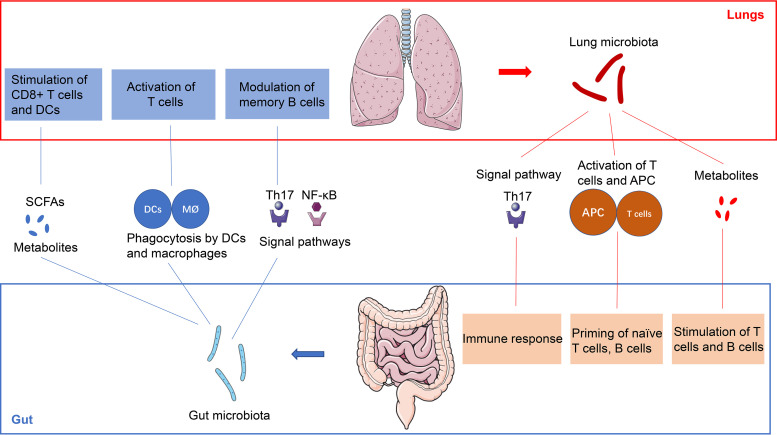FIG 1.
The gut-lung axis. The cross talk between the gut microbiota and lungs can be mediated by the microbiota and its products as well as immune cells, and the gut-lung axis can be divided in two directions. For instance, gut segmented filamentous bacteria (SFBs), commensal gut microbiota constituents colonizing the ileum, can activate the Th17 signaling pathway, which modulates memory B cells in the lungs and the response to lung autoimmune manifestations and pulmonary fungal infections. In addition, metabolites from the gut microbiota, such as SCFAs, can stimulate and promote the differentiation of T cells, which supports anti-inflammatory and immunomodulatory actions in the lungs. In addition, the gut microbiota enters the intestinal mucosa and may be phagocytosed by antigen-presenting cells (APCs), such as DCs and macrophages. APCs transfer to the lungs, stimulate T cells, and induce the immune response in the lungs. On the other hand, the lung microbiota exhibits similar effects and influences the immune system and homeostasis of the gut through the gut-lung axis.

